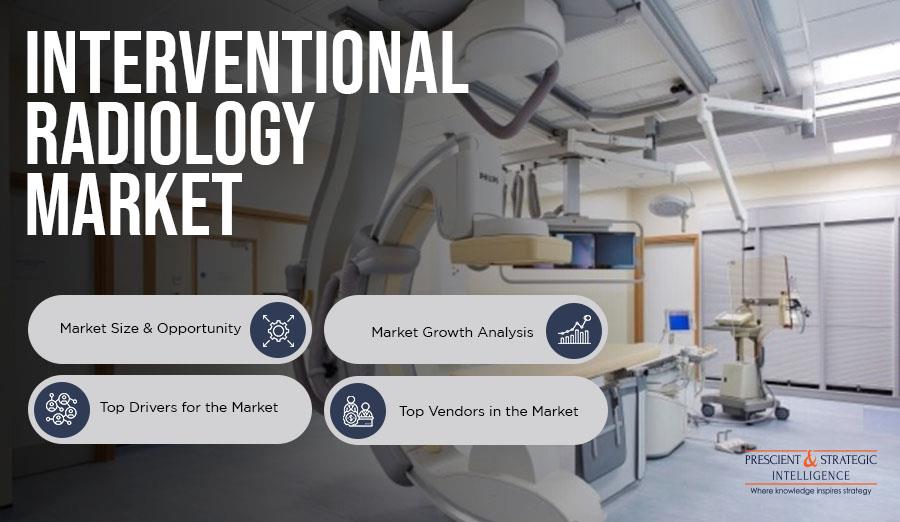Science
Interventional Radiology Market Poised for $45.9 Billion Growth by 2032

The global interventional radiology market is on track to experience significant expansion, projected to reach USD 45.9 billion by 2032, according to a study from P&S Intelligence. The market, valued at USD 29.8 billion in 2024, is expected to grow at a compound annual growth rate (CAGR) of 5.7% from 2025 to 2032. This growth is driven by the increasing prevalence of chronic diseases, a rising demand for minimally invasive procedures, and ongoing technological advancements in imaging modalities that enhance both diagnostic precision and therapeutic outcomes.
Innovations such as AI-powered imaging systems, robotic-assisted interventions, and hybrid operating suites are transforming procedural efficiency and accuracy. These advancements not only improve patient safety but also reduce recovery times, facilitating a broader acceptance of minimally invasive techniques. The aging global population, with projections indicating that one in six individuals will be aged 60 years or older by 2030, further amplifies the need for interventional procedures to manage complex, age-related health issues.
Healthcare systems worldwide face the challenge of delivering cost-effective solutions while addressing the increasing incidence of cardiovascular diseases, cancers, and other chronic conditions. Interventional radiology plays a crucial role in mitigating hospital stays and optimizing resource use, thereby enhancing healthcare accessibility.
Market Dynamics and Key Insights
The interventional radiology market is characterized by various product types and applications. By product type, MRI systems led the market with the largest share in 2024 and are expected to record the highest CAGR. Their superior soft tissue contrast, radiation-free imaging, and growing applications in oncology and neurology contribute to their dominance. Real-time MRI-guided interventions, along with the introduction of MRI-compatible devices, further boost adoption.
Angioplasty emerged as the leading procedure type, accounting for 35% of the market share in 2024. This trend is primarily driven by the high prevalence of cardiovascular diseases globally. Continuous advancements in balloon catheter and stent technologies, alongside improved imaging guidance, maintain angioplasty’s status as the primary interventional modality.
Embolization is anticipated to witness the fastest CAGR of 6.1%, driven by its effectiveness in treating tumors, hemorrhages, and vascular malformations. The integration of drug-eluting beads and radioembolization microspheres strengthens its role in interventional oncology and the management of benign conditions.
In terms of application segments, cardiology represented the largest share at 40% in 2024, supported by the global prevalence of coronary artery and structural heart diseases. Innovations in imaging-integrated cardiac interventions have enhanced clinical outcomes and sustained high procedural volumes. Oncology is expected to grow at the fastest rate, as minimally invasive treatments like tumor ablation and transarterial chemoembolization are increasingly preferred for patients who are not suitable candidates for surgery.
Regional Insights and Competitive Landscape
Geographically, North America accounted for approximately 40% of the global market in 2024, with the United States leading due to its advanced hospital infrastructure and robust research ecosystem. The region is at the forefront of adopting AI-integrated imaging systems, robotics, and hybrid suites.
The Asia-Pacific region is projected to exhibit the highest growth rate through 2032, driven by increasing healthcare investments and a growing elderly population. China is spearheading this growth with significant healthcare reforms and infrastructure expansion, while India shows promising potential fueled by private sector investments and rising patient awareness.
Europe is also experiencing steady expansion, bolstered by strong insurance coverage and a high prevalence of chronic diseases. Germany holds the largest market share in the region, while the United Kingdom is witnessing the fastest growth rate.
Emerging opportunities are evident in Latin America and the Middle East and Africa, with Brazil and the United Arab Emirates leading these markets. Efforts to modernize healthcare, increased awareness of minimally invasive procedures, and expanding diagnostic capacities are key growth drivers in these regions.
The interventional radiology market remains semi-consolidated, with major players such as Siemens Healthineers, GE Healthcare, and Philips dominating due to their global presence and advanced product portfolios. Regional and mid-sized companies are also contributing actively, offering niche and cost-effective solutions that enhance competitive intensity.
Recent developments underscore the sector’s commitment to innovation. In June 2025, Philips and Methodist Hospitals launched new interventional suites that integrate image-guided therapy solutions. Earlier, in March 2025, Gleneagles Hospital Bengaluru unveiled its Advanced Interventional Radiology Cath Lab, emphasizing the importance of minimally invasive therapies. Additionally, in June 2024, GE HealthCare and MediView XR introduced the world’s first augmented reality interventional suite, merging holographic visualization with live imaging.
As the interventional radiology market continues to evolve, it is well-positioned to address the increasing demand for effective and efficient healthcare solutions.
-

 Business5 months ago
Business5 months agoKenvue Dismisses CEO Thibaut Mongon as Strategic Review Advances
-

 Lifestyle4 months ago
Lifestyle4 months agoHumanism Camp Engages 250 Youths in Summer Fest 2025
-

 Sports4 months ago
Sports4 months agoDe Minaur Triumphs at Washington Open After Thrilling Comeback
-

 Sports5 months ago
Sports5 months agoTupou and Daugunu Join First Nations Squad for Lions Clash
-

 Top Stories5 months ago
Top Stories5 months agoColombian Senator Miguel Uribe Shows Signs of Recovery After Attack
-

 World5 months ago
World5 months agoASEAN Gears Up for Historic Joint Meeting of Foreign and Economic Ministers
-

 Health4 months ago
Health4 months agoNew Study Challenges Assumptions About Aging and Inflammation
-

 Business5 months ago
Business5 months agoOil Prices Surge Following New EU Sanctions on Russia
-

 Entertainment4 months ago
Entertainment4 months agoDetaşe-Sabah Violin Ensemble Captivates at Gabala Music Festival
-

 Entertainment4 months ago
Entertainment4 months agoBaku Metro Extends Hours for Justin Timberlake Concert
-

 Top Stories5 months ago
Top Stories5 months agoRethinking Singapore’s F&B Regulations Amid Business Closures
-

 Business5 months ago
Business5 months agoU.S. House Approves Stablecoin Bill, Sends to Trump for Signature









